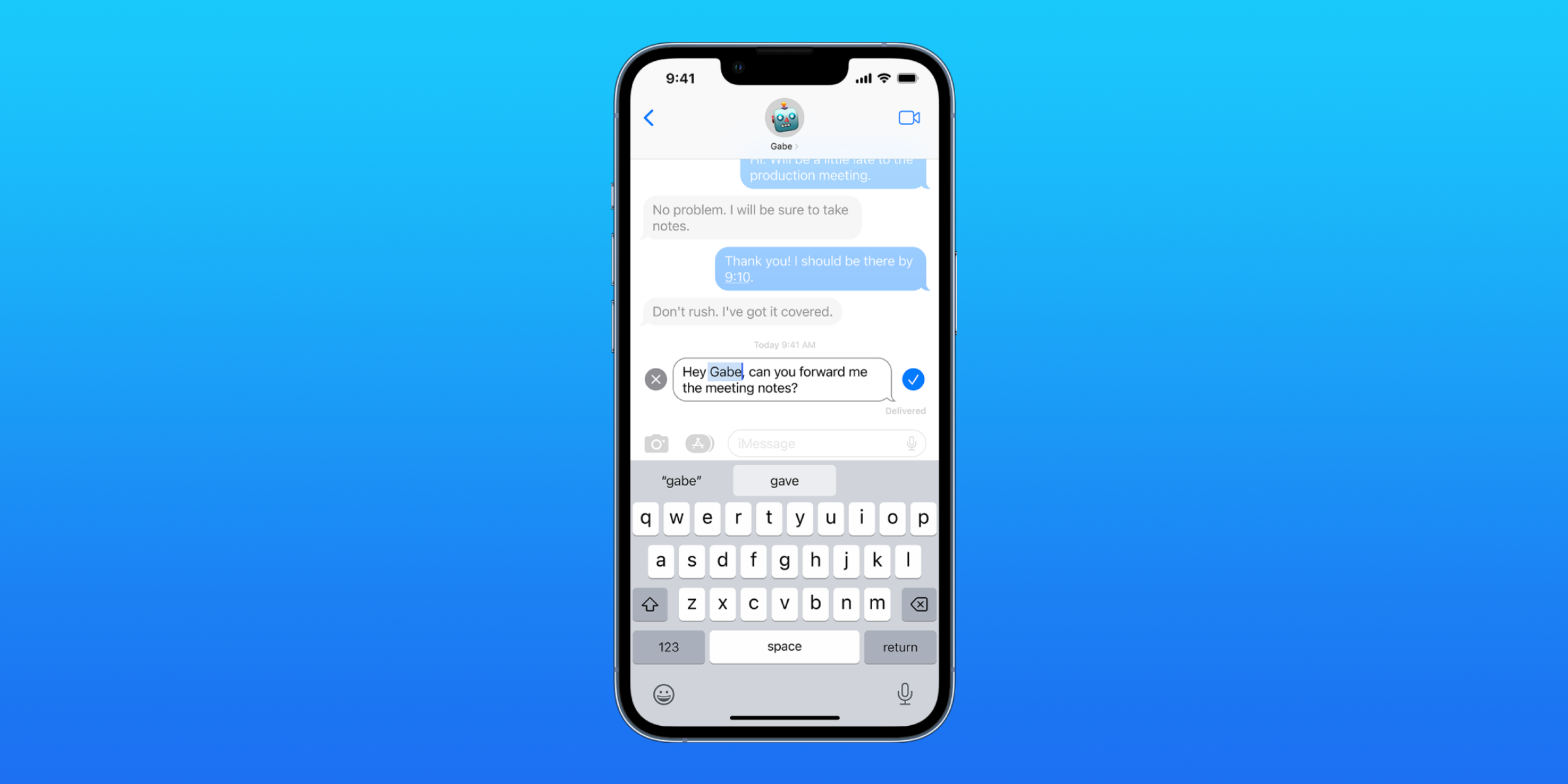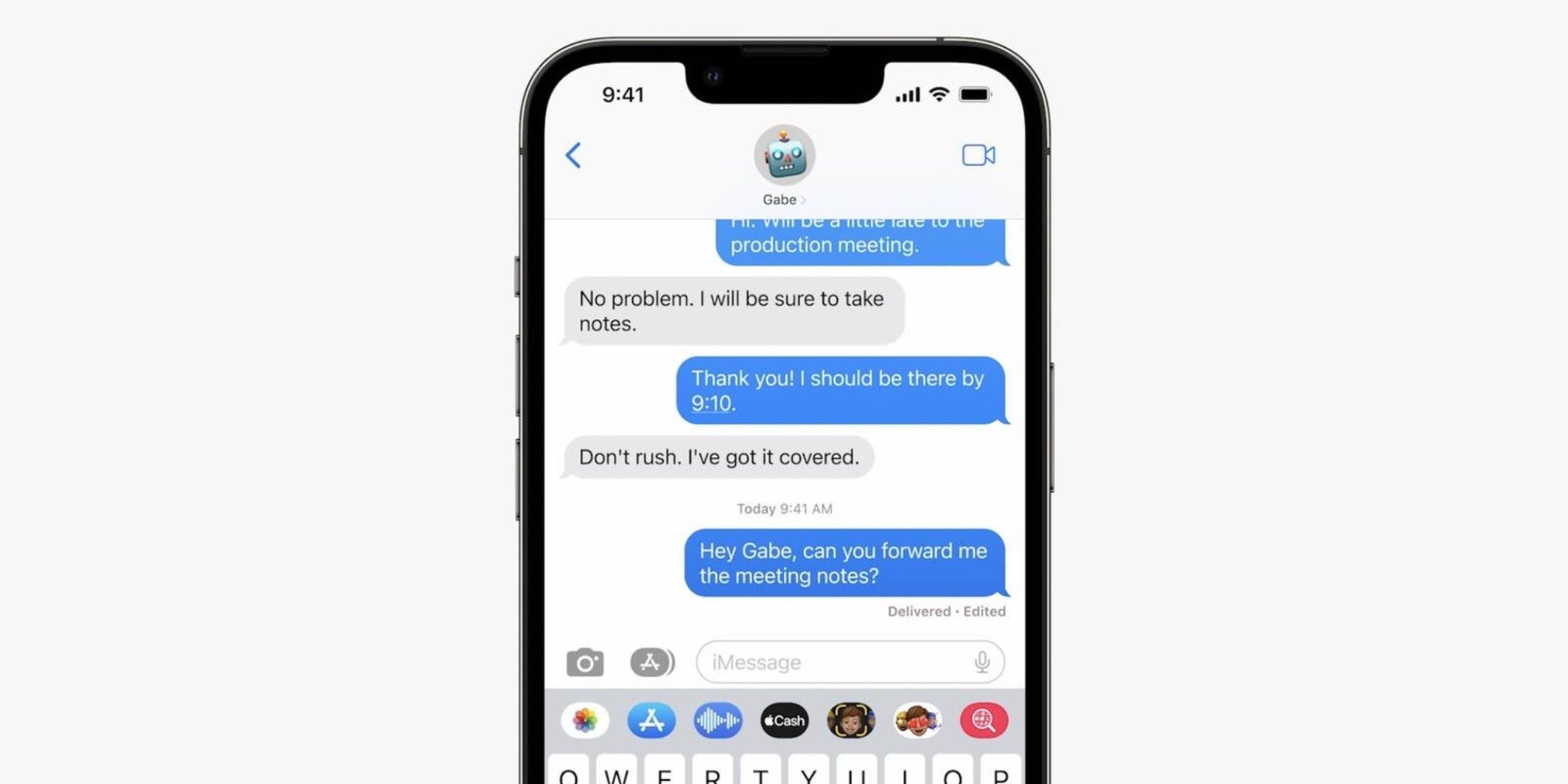iPhone users can finally unsend and edit their iMessages with iOS 16, but there are a few things that they need to know before fixing their mistakes with the new feature. It can be disastrous for a user to think that an edit has been made or that a message was successfully unsent when that is not the case. Just like any editing feature found on messaging apps or social media, restrictions apply when editing iMessages.
The changes to iMessage were first announced at Apple's WWDC in June 2022. Shortly after the event, developer and public beta software testing periods revealed more information about the features. These pre-release software versions helped identify situations when editing or unsending an iMessage would work well and situations where the process might not work as expected. Unsending messages debuted as part of iOS 16 in Sept. 2022 and appeared in iPadOS 16 and macOS Ventura in Oct. 2022.
Editing and unsending iMessages on iOS 16, iPadOS 16, and macOS Ventura requires software compatibility specifications that must be met in order for the feature to work properly. For the changes to go through as expected, both users must be updated to iOS 16. Moreover, each device in the user's portfolio must be updated to the latest software version — iPadOS 16 for iPads and macOS Ventura for Macs. If any of these devices are not updated, the recipient can see the original message regardless of whether it was unsent or edited. Though Apple users update their devices more often than others, many users will likely be on older versions of iOS, iPadOS, or macOS. For that reason, users should exercise caution when editing or unsending iMessages on iOS 16.
How Editing & Unsending Works On iMessage
Most users have probably experienced a situation with iMessage where they have sent a message that includes a typo or was sent to the wrong person. These are precisely the situations that iOS 16's iMessage features are designed to fix, but there are some other caveats that should be considered before editing or unsending messages. Up to two minutes after an iMessage has been sent, users can hold down the message bubble and press 'Undo send' to pull the message back. Similarly, users can hold down a message bubble and press the 'Edit' button to make the necessary changes to a message. Users can make Edits up to 15 minutes after they send the iMessage.
It's not that straightforward though. It's possible for the recipient to still see the original message, due to the way that iMessage handles edits and recalls. If users are running iOS 16, iPadOS 16, or macOS Ventura, they can see an edited iMessage's entire edit history, revealing the message's original version. Each edited message will have an 'Edited' tag below it, and both the sender and recipient can tap that tag to reveal the entire edit history. iMessage editing and unsending on iOS 16 is best used for fixing minor errors like typos or autocorrected mistakes. Due to the aforementioned factors, message editing on iOS 16 is not a reliable way to remove or correct serious mistakes.
Source: Apple


